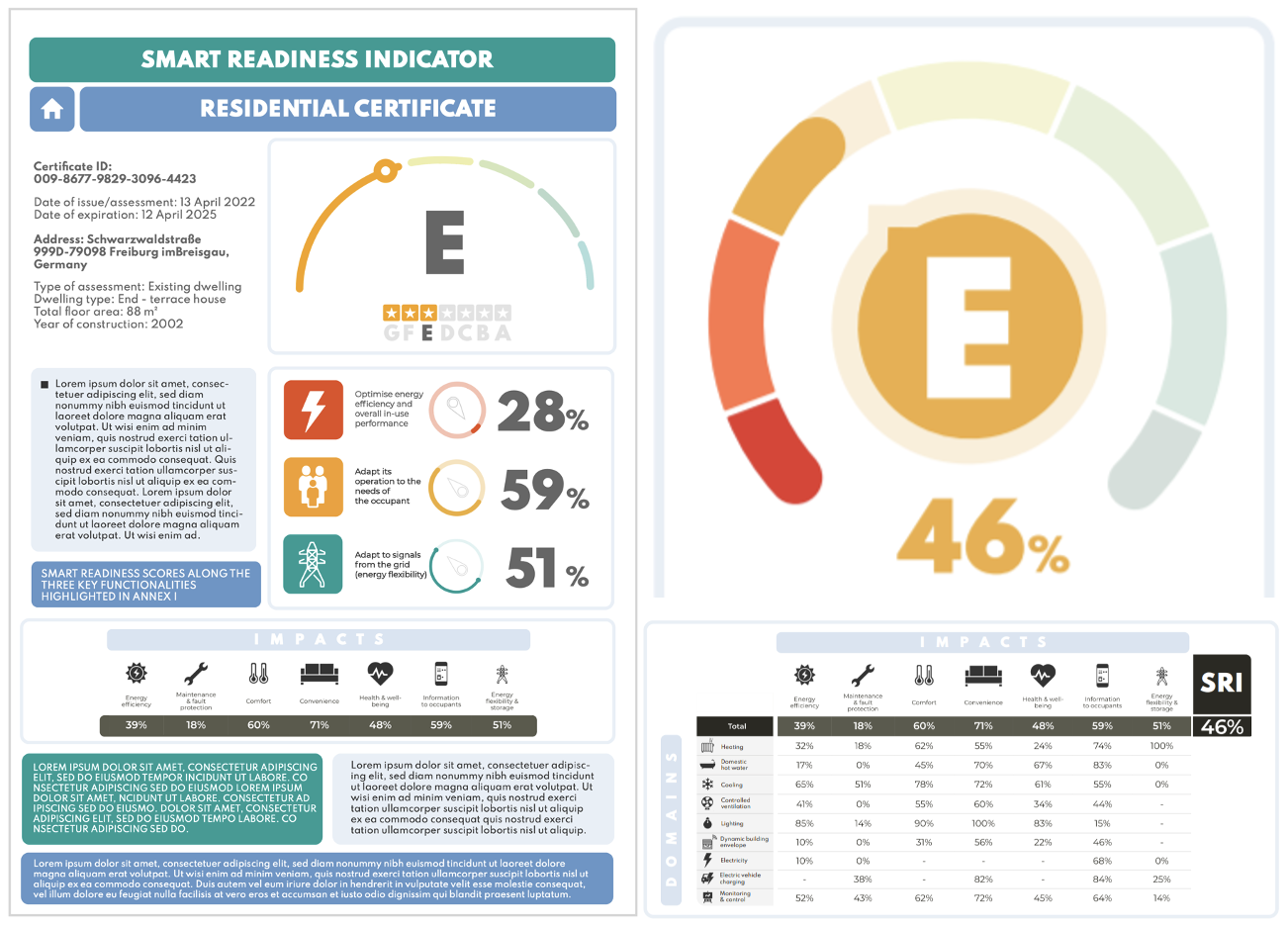SRI certificates online survey: key findings
date: 21/12/2022

In terms of key findings, it can be concluded that the preferred certificate design would include:
- the overall SRI score
- the SRI class (which is determined from the building’s overall SRI score on a seven-grade scale e.g. A to G)
- the SRI scores, expressed as percentage values, for the three key functionalities
- the SRI scores, expressed as percentage values, for each of the seven impact criteria
- the matrix of SRI scores by technical domain and impact criteria
Practically, it seems best to provide the matrix, and the SRI scores, expressed as percentage values, for each of the 7 impact criteria in the same manner. While it is preferable if additional information can be presented on connectivity, interoperability, cybersecurity of systems and data protection it is not essential. Provision of this information could also be facilitated through webpages accessed by a QR code or link on the certificate. It is preferable to provide information on what the SRI functionalities are and how the scores are determined; however, for pragmatic reasons (to avoid an excessive certificate length) this is likely to best be done through webpages accessed by a QR code or link on the certificate. It is also preferable to provide recommendations on how to improve the smart readiness of the building or building unit; however, for pragmatic reasons (to avoid an excessive certificate length) this is likely to best be done through webpages accessed by a QR code or link on the certificate.
If information on SRI functionalities and recommendations on improvement are provided on a website it is likely to be most useful to display the matrix of domain and impacts and invite users to click on each aspect of interest to see nested information on how the scores are related to the functionalities, how the functionality can be improved and the benefits to be obtained from doing so. In general, it is preferable that certificates carry some explanation on the certificate with a link to further information on a website or simply have all explanation on a website compared to simply using text on a certificate. It is also important that information be given on the SRI’s scope, and especially what it doesn’t address, to avoid misunderstanding and potential accusations of misrepresentation.
Preferably, the length of the physical certificate should be limited to two sides. A priori, the same certificate design can be used for residential and non-residential buildings.
